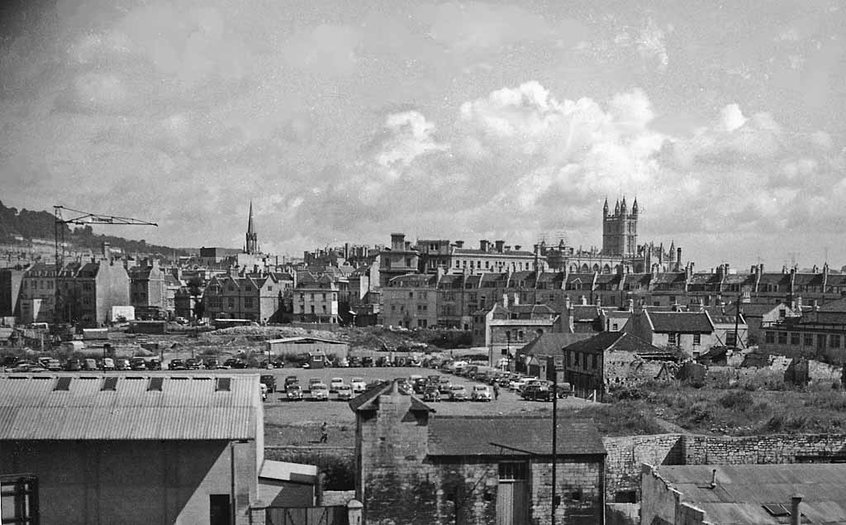As many as 1,000 homes in the English city of Bath were evacuated last night after building contractors unearthed an unexploded 500lb shell, thought to be a left-over from WWII.
A 300-metre exclusion zone was set up following the discovery at Lansdown Road, where contractors using a digger unearthed the device at the Royal High School.
Roads and schools remain closed and people spent the night at a nearby horse racing stadium as police bomb experts worked to erect a barrier around the device using 250 tonnes of sand, police said.
Once this barrier is in place, police will take the shell under escort to a safe location to carry out a controlled explosion.
Police said today it may be 48 hours before residents can re-enter the exclusion zone.
However, some residents inside the cordon refused to leave, and police are having to keep them 100m away from the device, which was discovered at approximately 4.40pm on 12 May.
“Decisions to evacuate houses are never taken lightly but during these incidents public safety will always be our primary concern,” said local police chief Kevin Thatcher in a statement today.

View of downtown Bath in 1958, believed to show empty spaces created by the ‘Bath Blitz’ of 1942 (Ben Brooksbank/Wikimedia Commons)
“We also appreciate the anxiety many in the local community may feel following the discovery device and the time required to remove it but we would urge people not to be alarmed.
“The EOD [explosive ordnance disposal team] are working as quickly as they can to remove the device and we will provide regular updates on their progress.”
While it is not yet clear where the shell came from, in April 1942 the city suffered what became known as the “Bath Blitz”, in which approximately 400 people were killed and around 1,000 buildings were badly damaged or destroyed by the German air force.
This was part of the so-called “Baedeker raids” – after the well-known travel guides of the time – in which targets were chosen for their cultural and historical value.
Top photograph: Aerial view of Bath, England (Arpingstone/Wikimedia Commons)
Comments
Comments are closed.







Most of Bath residence would surely hope that the removal team would not be constrained by the advent of Friday the thirteenth!!
I was born after WW2 but still recall my father and uncles talking about their service in the US Military and how badly the UK suffered from the bombing. What I didn’t know until I read your article was that sites were chosen for the damage that could be done to places of cultural and historical significance (which Isis still does today.) So much lost due to hate and violence – places and items of significance we can never get back. My heart goes out to the people of Bath who have had to leave their homes. May the time pass quickly and the detonation safely carried out.